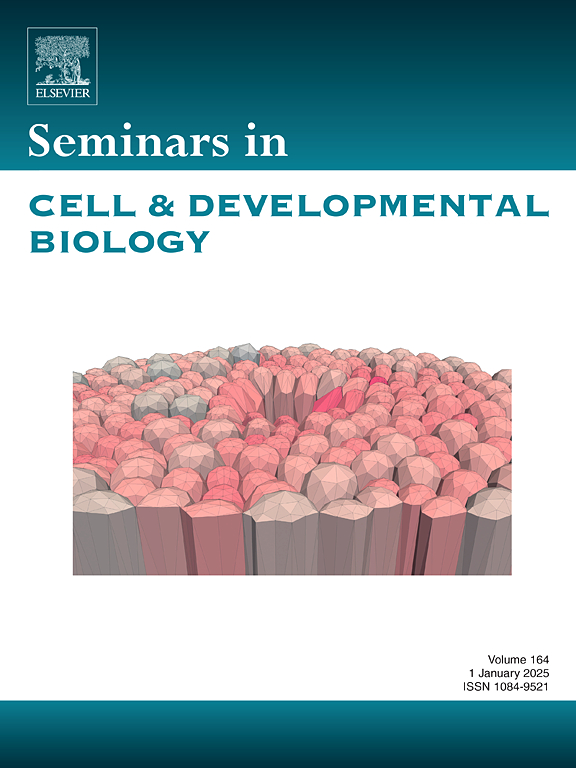Force of change: How biomechanical cues drive endothelial plasticity and morphogenesis
IF 6
2区 生物学
Q1 CELL BIOLOGY
引用次数: 0
Abstract
Endothelial cells (ECs), which line the inner surface of blood vessels, continuously respond to biomechanical forces from blood flow, extracellular matrix, and intracellular tension. Recent advances have highlighted the pivotal role of these forces in regulating cellular plasticity during endothelial-to-hematopoietic transition (EHT) and endothelial-to-mesenchymal transition (EndMT), two processes essential for embryogenesis, tissue repair, and disease progression. EHT contributes to hematopoietic stem cell formation, and EndMT to valve formation and vessel sprouting. When misregulated, both processes cause vascular pathologies such as fibrosis, cancer metastasis, and atherosclerosis. This review provides an overview of how biomechanical cues influence EC fate decisions and behavioral transitions. We explore how external biomechanical forces are sensed at the endothelial cell surface, transmitted through intracellular adaptors, and affect changes at the transcriptional level. Understanding these mechanotransduction pathways during cell fate transition not only deepens our knowledge of endothelial cell plasticity but also provides insight into potential root causes of and treatments for vascular diseases.
变化的力量:生物力学线索如何驱动内皮可塑性和形态发生。
内皮细胞(ECs)排列在血管的内表面,不断地对来自血流、细胞外基质和细胞内张力的生物力学力做出反应。最近的进展强调了这些力量在内皮-造血转化(EHT)和内皮-间充质转化(EndMT)过程中调节细胞可塑性的关键作用,这两个过程对胚胎发生、组织修复和疾病进展至关重要。EHT有助于造血干细胞的形成,而EndMT有助于瓣膜的形成和血管的发芽。当调控不当时,这两个过程都会引起血管病变,如纤维化、癌症转移和动脉粥样硬化。这篇综述概述了生物力学线索如何影响EC命运决定和行为转变。我们探索外部生物力学力如何在内皮细胞表面被感知,通过细胞内接头传递,并影响转录水平的变化。了解细胞命运转变过程中的这些机械转导途径不仅加深了我们对内皮细胞可塑性的认识,而且为血管疾病的潜在根本原因和治疗提供了见解。
本文章由计算机程序翻译,如有差异,请以英文原文为准。
求助全文
约1分钟内获得全文
求助全文
来源期刊
CiteScore
15.10
自引率
1.40%
发文量
310
审稿时长
9.1 weeks
期刊介绍:
Seminars in Cell and Developmental Biology is a review journal dedicated to keeping scientists informed of developments in the field of molecular cell and developmental biology, on a topic by topic basis. Each issue is thematic in approach, devoted to an important topic of interest to cell and developmental biologists, focusing on the latest advances and their specific implications.
The aim of each issue is to provide a coordinated, readable, and lively review of a selected area, published rapidly to ensure currency.

 求助内容:
求助内容: 应助结果提醒方式:
应助结果提醒方式:


